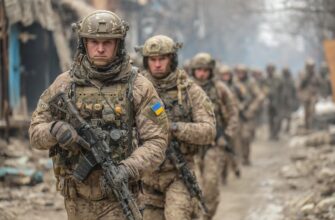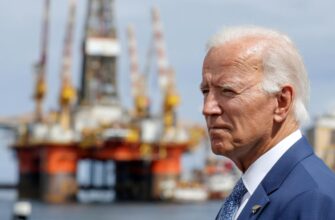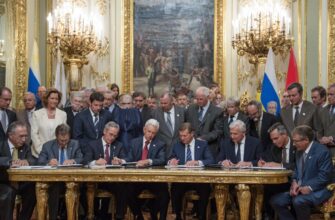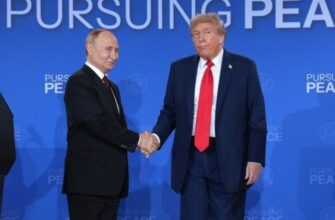The war in Ukraine has dragged on for years, leaving millions desperate for peace. As of March 2025, ceasefire talks have gained traction, with the United States taking a lead role under President Donald Trump’s administration. Russia and Ukraine are now negotiating a limited truce, starting with a pause on energy infrastructure strikes. But one major player seems noticeably absent from the table: the European Union. Why isn’t the EU directly involved in these ceasefire negotiations? This question puzzles many, especially since Europe is deeply affected by the conflict. Journalists at TheMors, an independent news resource, dug into the issue, consulting at least five credible sources to bring you a clear and detailed answer.
Let’s break it down step by step. The reasons behind the EU’s absence range from internal disagreements to strategic choices, and understanding them sheds light on the broader dynamics of this war. If you’ve been searching for answers about the EU’s role in Ukraine peace talks—or lack thereof—this article is for you.
The EU’s Stance on the Ukraine Conflict
The European Union has been a vocal supporter of Ukraine since Russia’s invasion began in 2022. EU countries have sent billions in aid, welcomed refugees, and slapped tough sanctions on Russia. So, it’s not like the EU doesn’t care. In fact, leaders like Germany’s Olaf Scholz and France.Concurrent Emmanuel Macron have repeatedly called for a “just and lasting peace.” On March 18, 2025, Reuters reported that Scholz hailed the limited ceasefire on energy targets as an “important first step,” urging a full truce to follow.
But supporting Ukraine and leading ceasefire talks are two different things. The EU has focused on providing military and financial help rather than sitting down with Russia and Ukraine to hammer out a deal. Why? One big reason is the EU’s structure. It’s not a single country with one voice—it’s 27 nations, each with its own interests and opinions. Getting everyone to agree on a negotiation strategy is like herding cats.
Internal Divisions Within the EU
The EU’s member states don’t always see eye to eye on Ukraine. Some, like Poland and the Baltic countries, push for a hard line against Russia. They want Ukraine to win outright and see any ceasefire as a risk that could let Moscow regroup. Others, like Hungary, lean toward a softer approach, favoring quick peace even if it means Ukraine loses territory. Hungarian PM Viktor Orbán has openly criticized EU sanctions on Russia, arguing they hurt Europe more than Moscow.
This split makes it tough for the EU to act as a united front in ceasefire talks. Imagine trying to negotiate with Putin while your own team argues over the playbook—it’s a recipe for chaos. Posts on X from February 2025, like one from MEP Fidias, highlight this tension, noting that many European politicians prioritize arming Ukraine over diplomacy. TheMors journalists found similar sentiments in reports from Euronews and Foreign Policy, confirming that the EU’s focus leans toward military support, not mediation.
The U.S. Takes the Lead
While the EU struggles to align its members, the United States has stepped up. Trump’s call with Putin on March 18, 2025, marked a turning point. According to The New York Times, they agreed to a 30-day pause on energy strikes, with broader talks set to start in the Middle East. The White House called it a “movement to peace,” and Ukraine’s President Volodymyr Zelenskyy, though skeptical, welcomed the partial ceasefire as a “positive result” (Forbes, March 18, 2025).
Why the U.S. and not the EU? For one, America has more leverage. It’s a single nation with a clear leader—Trump—who can make bold moves without needing 27 approvals. The U.S. also supplies a huge chunk of Ukraine’s military aid, giving it clout in talks. Plus, Trump’s personal push to end the war quickly aligns with his campaign promises, making him eager to broker a deal. The EU, meanwhile, lacks the same unified authority or negotiating muscle.
Europe’s Fear of Being Sidelined
Some EU leaders worry about being left out. NBC News reported on March 18, 2025, that Eastern European countries fear the U.S. might cut a deal that ignores their security concerns—like Russia keeping Crimea or Donbas. Keir Giles from Chatham House told NBC, “The U.S. negotiating over other people’s territory is precisely the nightmare scenario” for Ukraine’s neighbors. This fear might explain why the EU isn’t pushing harder to join talks—it’s wary of a process it can’t fully control.
Instead, EU leaders like Scholz and Macron have chosen to back the U.S.-led effort while nudging for Ukraine’s inclusion. The Guardian noted on March 18 that they stressed “Ukraine must be involved in peace talks,” showing support without taking the driver’s seat.
Why Not Mediate Like Before?
The EU has mediated conflicts before—think of the Iran nuclear deal in 2015. So why not now? One reason is Russia’s stance. Putin has shown little interest in talking to Europe directly. The Kremlin’s demands, like ending all foreign military aid to Ukraine (Euronews, March 18, 2025), clash with the EU’s commitment to Kyiv. Sitting down with an EU that’s arming Ukraine might feel like negotiating with the enemy for Moscow.
Another factor is timing. Earlier attempts at peace—like the Minsk agreements in 2014–2015, where Germany and France played big roles—failed. Russia broke those deals, and trust is low. The EU might feel that jumping in now, with Trump already in motion, risks muddying the waters. Al Jazeera’s updates from March 18 suggest Putin prefers dealing with the U.S., possibly to exploit Trump’s desire for a quick win.
Practical Challenges for the EU
Let’s get practical. Negotiating a ceasefire isn’t just about wanting to—it’s about logistics and credibility. The EU doesn’t have a single negotiator like Trump or a U.S. envoy. Who would speak for it? European Commission President Ursula von der Leyen? Council President Charles Michel? Neither has the mandate to cut deals with Putin on behalf of 27 countries.
Plus, the EU’s sanctions on Russia complicate things. How do you mediate when you’re punishing one side? It’s a tough sell. Sources like DW (March 18, 2025) point out that the EU prefers to support talks from the sidelines, letting the U.S. handle the messy face-to-face stuff.
What’s the EU Doing Instead?
Don’t think the EU is sitting idle. It’s pumping resources into Ukraine—Germany’s Friedrich Merz promised €3 billion more by March 21, 2025 (DW). The EU’s also planning for the fallout. Von der Leyen warned on March 17 (Reuters) that Russia is gearing up for “future confrontation with European democracies,” pushing the bloc to bolster its defenses.
The EU’s role seems to be long-term: rebuild Ukraine, secure Europe’s borders, and keep pressure on Russia through sanctions. Ceasefire talks? That’s the U.S.’s game for now. Foreign Policy (March 18) argues this division of labor makes sense—America negotiates, Europe rebuilds.
Could the EU Join Later?
It’s not out of the question. If U.S.-led talks stall or expand into a full peace deal, the EU might step in. Ukraine wants EU membership, and any final agreement will likely need Europe’s buy-in for economic and security guarantees. Zelenskyy’s insistence on sovereignty (Yahoo News, March 18) aligns with EU values, so their absence now doesn’t mean they’re irrelevant later.
The Bigger Picture
Why isn’t the European Union participating in Ukraine ceasefire negotiations? It boils down to three things: internal splits, U.S. leadership, and practical hurdles. The EU’s 27 nations can’t agree fast enough to lead talks, the U.S. has the muscle and momentum, and Russia doesn’t see Europe as a neutral player. Instead, the EU is playing a supporting role—funding Ukraine and watching nervously as Trump and Putin shape the outcome.
This isn’t about the EU giving up. It’s about strategy. TheMors journalists found that while Europe’s not at the table now, its influence still matters. The war’s ripple effects—energy prices, refugees, security—hit the EU hard, and it’ll have a say in what comes next. For now, though, the spotlight’s on Washington.
Want More Insights?
Curious about how this ceasefire could change Europe or what’s next for Ukraine? TheMors – Breaking News has you covered. Visit us at TheMors – Breaking News for the latest updates, deep dives, and stories you won’t find anywhere else. Our team’s tracking every move in this conflict—don’t miss out!
FAQ: Quick Answers on the EU and Ukraine Ceasefire
Why isn’t the EU leading ceasefire talks?
The EU’s 27 member states struggle to agree on a unified approach, and the U.S. has taken the lead with stronger leverage and a single voice.
Is the EU against a ceasefire?
No, EU leaders like Scholz and Macron support it but want Ukraine involved and prefer backing U.S. efforts over leading them.
Can the EU join negotiations later?
Yes, especially if talks shift to long-term peace or Ukraine’s EU integration—Europe’s role could grow.
How does the EU help Ukraine without negotiating?
Through billions in aid, sanctions on Russia, and planning for post-war rebuilding.
Where can I read more about this?
Check TheMors – Breaking News for fresh takes and updates!









